
Plant-Love Story: Wandering the Golden Road (to Unlimited Dormidera Devotion)

Contributor
- Topics: Plants You Need
The Catalyst
Sometimes the smallest of gestures lends a disproportionate degree of meaning.
Gardeners tend to understand this discrepancy well. My own horticultural practice offers me a feeling of achievement I could never attain were I to judge my daily life on mainstream American standards.
So when I planted a handful of California poppy (Eschscholzia californica) seeds in a plot of hard soil—scratch that, in dirt—my pale sense of efficacy blossomed with every tangerine-colored bloom that unfurled.
Ever since I moved to a studio in San Francisco’s western half, I knew I needed to act to remedy the lifelessness on my block. My street was shadowed in a spectrum of shades of gray, a combination of sidewalk, asphalt, peeling paint, and fog. Few street trees struggled in the winds that whipped through the neighborhood like zephyric terrors come afternoon. Closest to home, adjacent to my front door, was a strip of soil no wider than an inch and no longer than my arm. An opportunity, obviously.
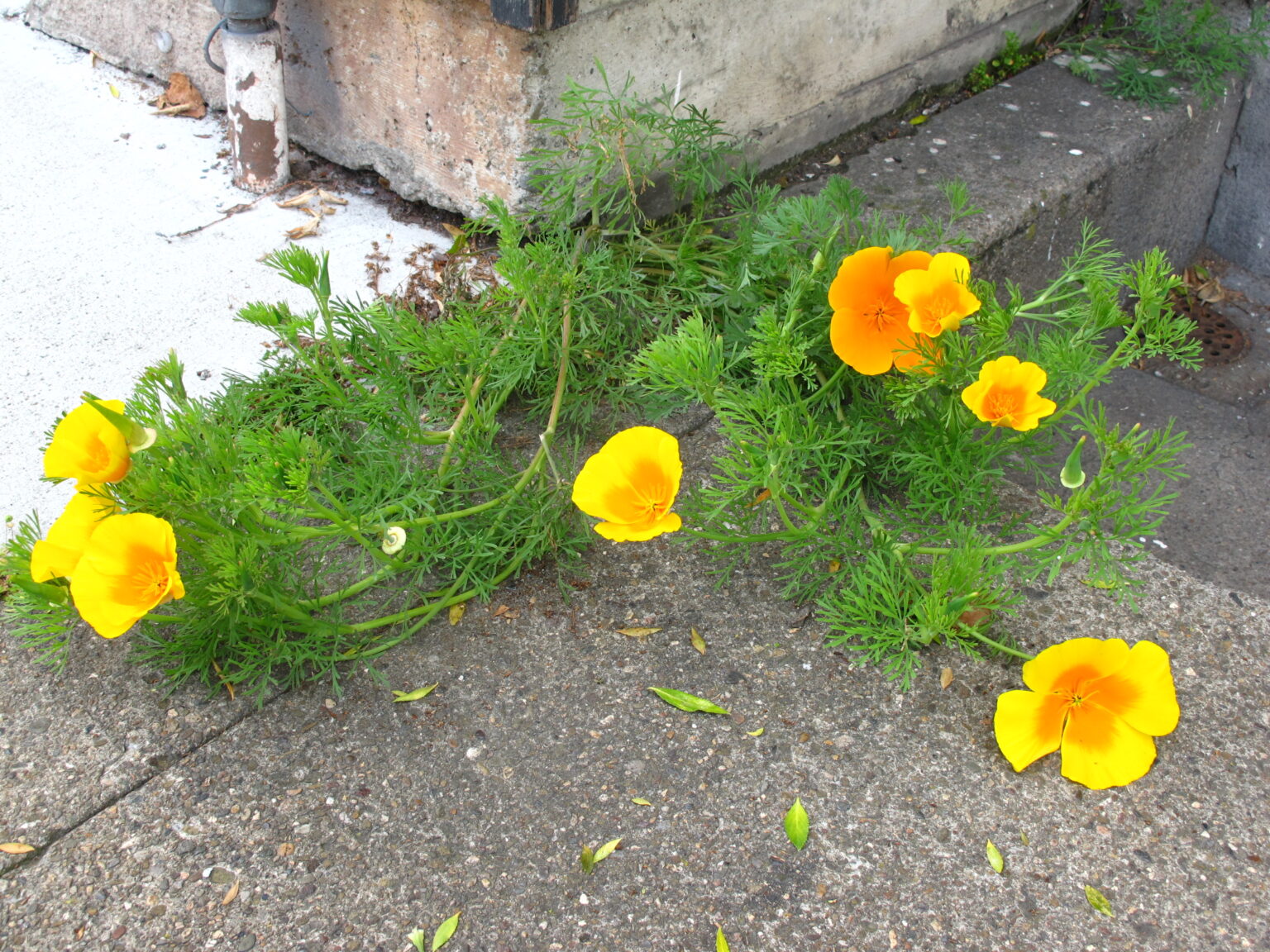
This tiny plot existed, bare and hard, between the two concrete steps descending to my front door and the adjacent apartment building. For my single species, work-with-what-you’ve-got garden, I chose seeds from the poppy variant indigenous to the California coast, that one with the pop of orange in the center haloed by gold, bluish-green foliage—reminiscent of our state rock, serpentine—and a tendency to grow low to the ground.
My goal germinated and sprouted, grew and gave. One seedling, buried in the strip where the sun strikes brightest, produced about 100 blossoms, fanning out like flares across the sidewalk.
A Community Abuzz
When the sunshine was strong enough to burn through the clouds, a party of bumble and honey bees visited the two-toned cups to gather pollen. They collected the orange grains in “pollen baskets” called corbiculae, thick hairs on their legs or abdomen into which they packed the moist microspores into BB-sized bundles. (Though I was under the impression that the vegan bees were also sipping nectar, I was wrong; they dine on poppies solely for the abundant pollen.) Even though “my” poppy was one of the few flowers growing within sight, I was heartened to learn that California poppies are common to all of the four “recipes” for native garden “mini-sanctuaries” listed in the tome of gardening for bee habitat, California Bees & Blooms (Frankie et al. 2014).
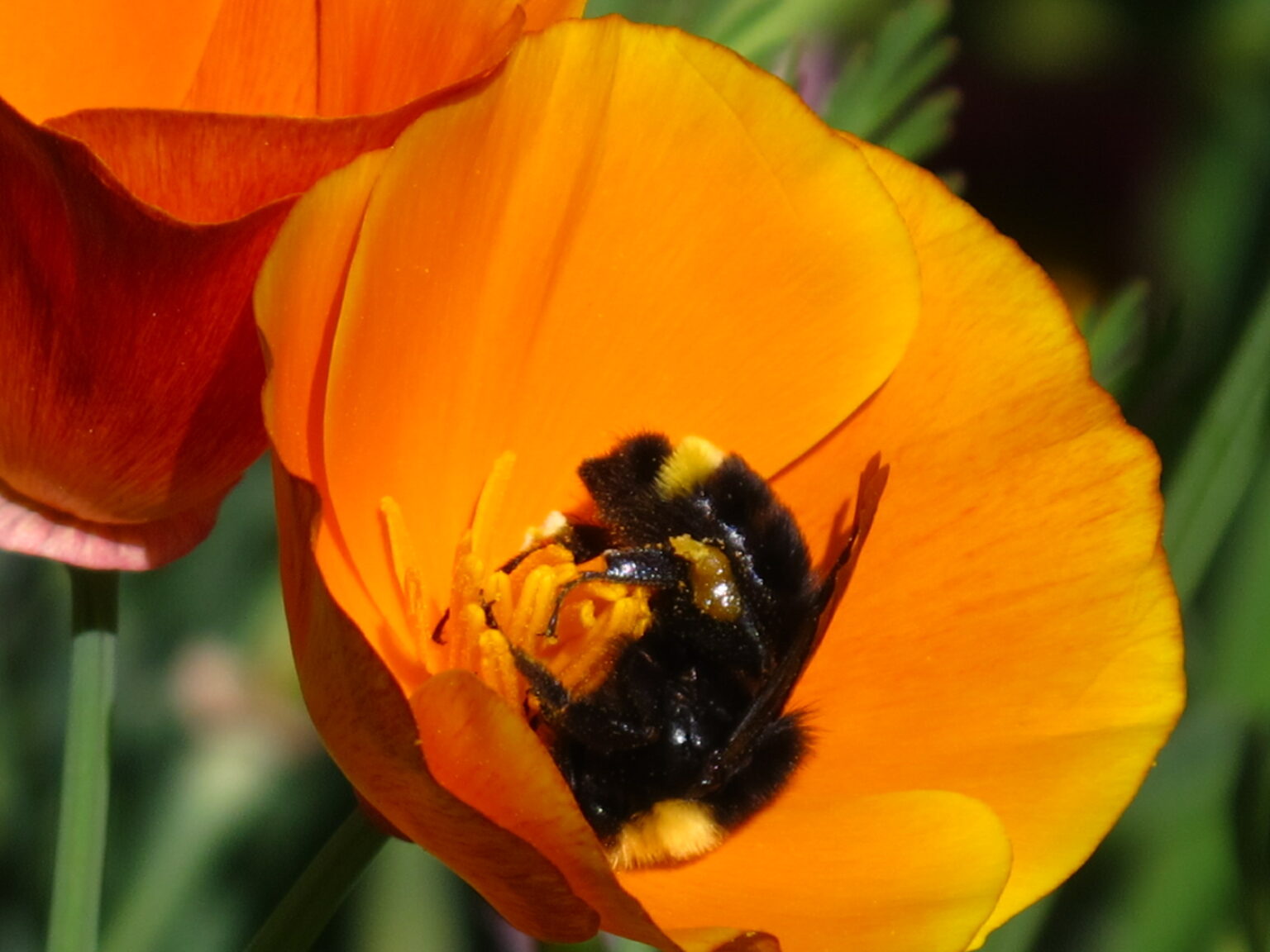
The bees were not the only visitors. Neighbors admired the anomaly, as did my landlady. I once saw a woman taking photos of the flowers with her phone. When I’d return at midnight from a shift at the restaurant where I worked, the poppy was a beacon in the dark, greeting me as I unlocked the door to my solitary studio. Occasionally I’d cut a nosegay to stick in an old cobalt-blue bottle, for the blossoms last well for a few days if cut and immediately put in water. (The common belief that it is against California law to pick the state flower is a myth; it is only unlawful to take flowers from another’s property or protected land.)
It may have been a treat on my block, but my prize bloom was hardly rare. If California poppies seem to be everywhere, it’s because they are, especially during the species’ prime blooming months between March and September. Being so common, easy to grow, and prolifically self-seeding, they are one of those floral embodiments of human subjectivity, similar to calla lilies, eucalyptus trees, and other contested species. In countries to which they were introduced in the mid- to late-1800s—including other mediterranean climate zones like Chile, Australia, and South Africa—they have become naturalized weeds, even disparaged as noxious invasives. Imagining my beloved orange flower could offend a gardener in Valparaíso in the same way South Africa’s yellow profusion of African wood-sorrel (Oxalis pes-caprae) aggravates me in San Francisco does much, at its lightest, to cultivate compassion among international plant nerds and, at its deepest, provoke soul-searching about hypocrisy.
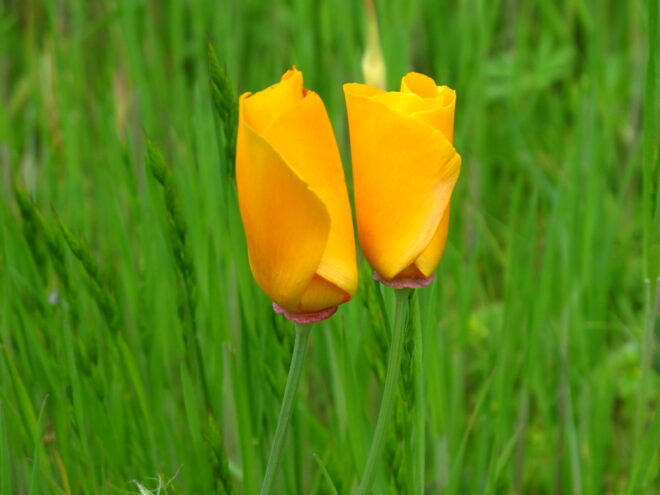
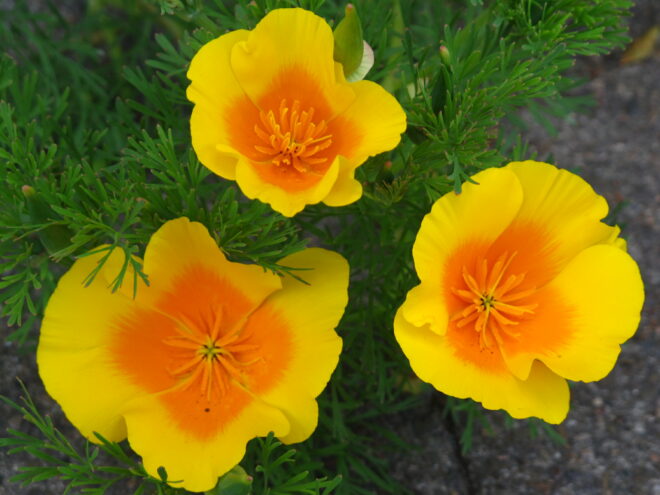
Fairy Folk and Ballistics
Regardless of such horti-sophical musings, observing the natural world can be a lot like writing: both provide the continual opportunity for revision, to literally “look again.” This can mean looking again at genetics to tweak taxonomy, looking again at history to amend species names to honor Indigenous peoples instead of colonizers, or looking again just to strengthen or refresh our relationship to a favorite familiar plant.
Looking again at the California poppy, crouched down low, eye to inflorescence, I realize it is not even the famous petals I like best, save when I can watch a pollinating bee tumble around in the pollen bowl like a fuzzy drunkard. Rather, I find one of the sweetest parts of a poppy’s morphology to be the rosy-red “receptacle,” the flat disk at the top of the stem and the base of the flower. Something about that gentle burst of faded crimson between the green and orange always captures my gaze, perhaps because red and green are complementary colors (opposite each other on the color wheel) while red and orange are analogous (next to each other).



Then there is the “dunce cap,” or bud cover. This is the pointed green calyx, punctuated by a pink tip matching the receptacle, which lifts off the bud and falls away as the petals begin to open. Aside from in situ, the most lovely depiction I’ve found of this process is from my treasured book, Emory Smith’s The California Poppy, a 1902 paean laden with melodramatic prose wholly devoted to the Golden State’s signature flower. In a pen-and-ink drawing captioned “How Elves Come to California,” mischievously smiling, diminutive creatures pop from the buds, holding their calyx-caps to their heads as fairies flit about.
How about the fruits? Once pollination is successful, sickle-shaped capsules develop, packed with dozens of small, dark brown or black seeds. It is not uncommon to encounter a stem supporting flowers in all three stages: budded, fully unfurled, and with three-inch-long fruits projecting like exclamation points. When the capsule matures and browns, the tension from the drying cell walls causes the fruit to split in two and ballistically explode its seeds, flinging them much farther than had the fruit simply fallen and decayed on the ground. (Though not as far as had an animal eaten it, flown or loped miles away, and pooped out the seeds.) This dispersal strategy is called, to the joy of poetically inclined botanists, “violent dehiscence.” I have longed for years to witness this phenomenon and, because it can be an audible action in some species, to hear it. Pop!
Honoring the Old Horticulture
With so many seeds on so many continents, the California poppy’s future seems secure. But I am equally intrigued to reconsider its past, namely its variety of monikers throughout cultures and time. (All names have been culled from Smith’s book.)
The Spanish settlers knew it as calce de oro (chalice of gold), or calcedora for short. Similarly, they popularly called it copa de oro (cup of gold). La amapola (simply, the poppy) was direct and common, and dormidera may have referred to drowsiness upon sipping poppy tincture or to the tendency of the flowers to close up at night. Torosa may have derived from toroso, meaning strong and robust, or from antorcha, a reference to either the fiery color of the petals or the torch-like shape of the fruit.
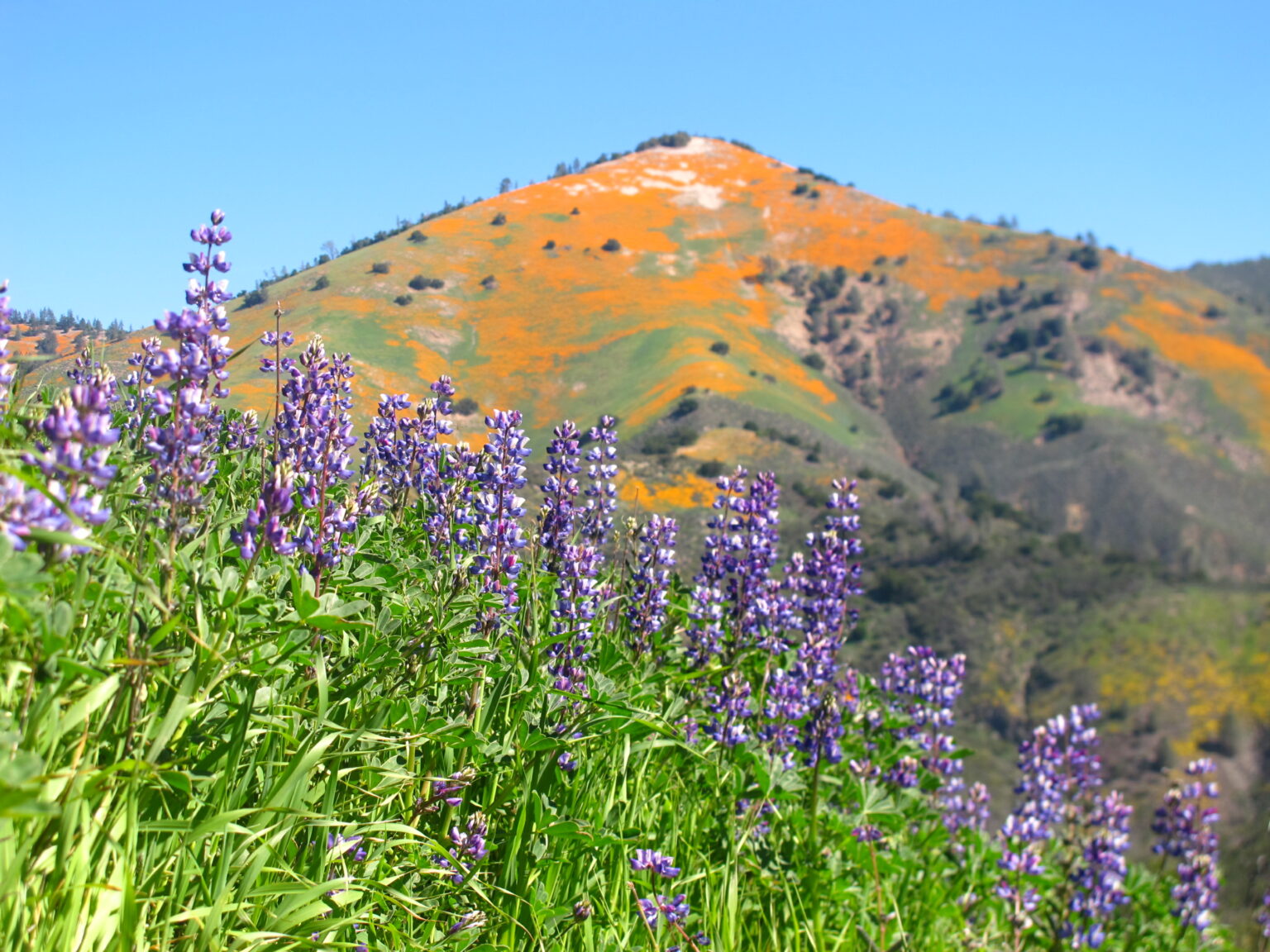
Native Californians had their own names for the poppies covering the hills throughout the land, of course, long before conquistadors, foreign naturalists, and settlers “discovered” the species and designated their own. According to Smith, a-tow-sha-nut was given by the Luiseño, who called the place where Pasadena is now built A-tow-shan-a-my, meaning “the place of poppies.” The nearby Serrano called them tes-an-aht, and the neighboring Cahuilla, tesebal. On the northern coast, tribes of the area now known as Humboldt and Mendocino County used dis-shu-le, to-shu-le, and sdosh-stu-sdoh. These six names from The Golden Poppy (1902) provide a wildly incomplete list, given there were as many as 135 distinct dialects among California’s Indigenous population prior to colonization.
Two names popular among European botanists in the early 19th century were derived from the Greek: Chryseis, after a Trojan woman known for her beauty in Homer’s Iliad, and Omonia, meaning “harmony.” During this same time, the California poppy got its tongue-twister of a genus, Eschscholzia. Botanist Adelbert von Chamisso named it in honor of John Frederick Eschscholtz, a surgeon and naturalist who traveled with him upon the ship Rurick, an 1815 expedition searching for a northern passage linking the Pacific and Atlantic oceans. (Chamisso evidently ditched the “t” when christening the genus.) Like many Latinized binomial names, Eschscholzia is tricky to pronounce. Smith, however, was adamant we learn how. He argued that “it is improper to avoid its use” and encouraged readers that once we all practice it, “it will soon take its place among our loved household words.”
I doubt Eschscholzia ever entered the daily lexicon as successfully as texting, Covid, and lol have over a hundred years after the author pleaded his case.
Despite Smith’s good intentions, the act of naming can be fraught with complications. Is knowing a name the way we make a relationship with and honor the other, a first step toward understanding, a sign of respect, an extension of friendship? Or does it reflect a desire for control and dominance, an obsession with listing and tallying, a power play that taints our ability to observe and that, as bioregional writer Stephanie Mills critiqued, “reifies the I-It relationship”?
It can be both; I choose the former, and my community expands in tandem. Then there’s the approach Robert Aitken advocates in his poem “Verses for Environmental Practice”:
Watching gardeners label their plants
I vow with all beings
to practice the old horticulture
and let plants identify me.
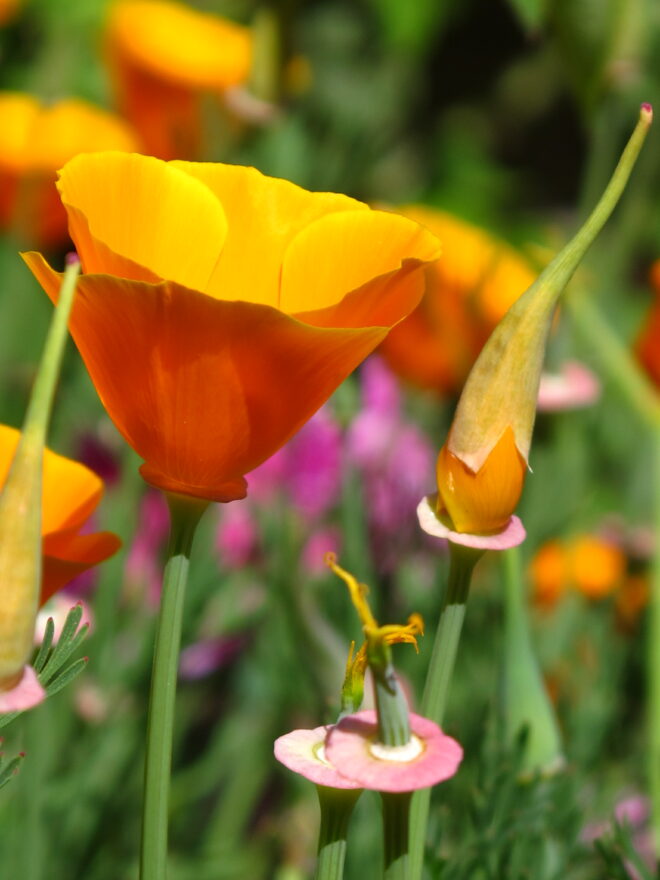
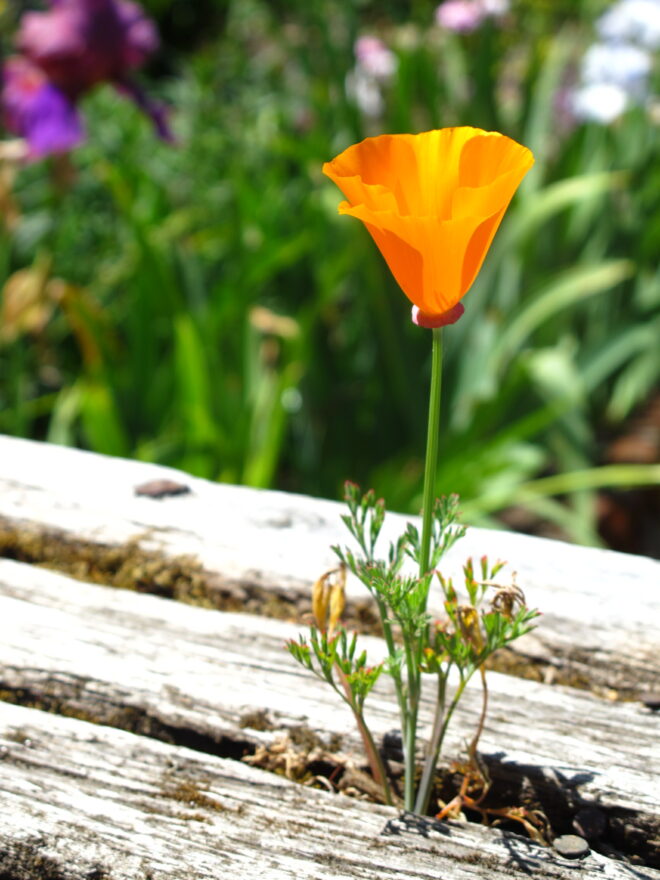
Urban Amapola
Though the poppy that awaited me for months at my front stoop grew ratty as summer’s fog tendriled in from the west, I refrained from pulling it. I wondered how far the thousands of seeds might travel once the maturing fruits dehisced. My small and mundane gesture—a few seeds scattered—alchemized into a strong and much-needed sense of generativity. I imagined my entire block becoming a grid outlined in pollen-dusted gold, abuzz and alive, elves emerging from the buds, the carrot-like taproots surging beneath the neat squares of concrete, compromising their illusion of permanence, and launching a petal-powered protest to uniformity. A productive crack here, another there, bright and bee abundant. The poppy as a peaceful monkey wrench or, as environmental preservationist Ken Sleight once put it, a symbol of “let’s do better.”
Whether admiring a sidewalk stem or a superbloom, a species, community, ecosystem, or worldview, we have the capacity to use our powerful ability to re-envision something better. What might you want to give another look?
Resources
Aitkin, Robert. Ed. Kaza, Stephanie; Kraft, Kenneth. 2000. Dharma Rain: Sources of Buddhist Environmentalism. Boulder: Shambhala Publications.
Frankie, Gordon W.; Thorp, Robbin W.; Coville, Rollin E.; Erter, Barbara. 2014. California Bees & Blooms: A Guide for Gardeners and Naturalists. Berkeley: Heyday Books.
Lincoln, ML. 2020. Wrenched from the Land: Activists Inspired by Edward Abbey. Albuquerque: The University of New Mexico Press.
Mills, Stephanie. 1989. Whatever Happened to Ecology? San Francisco: Sierra Club Books.
Smith, Emory E. 1902. The Golden Poppy.


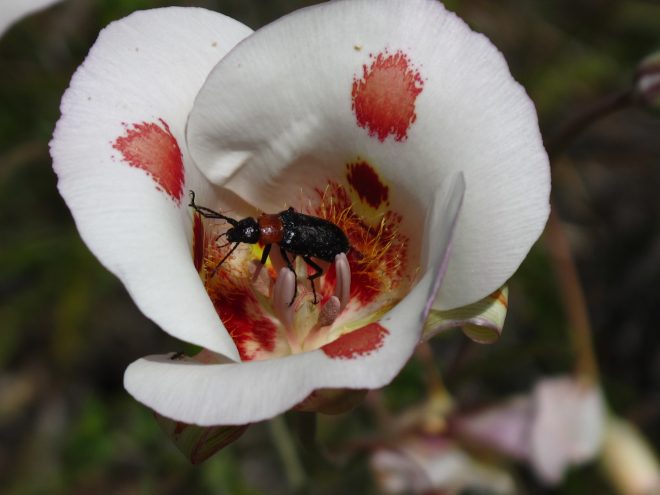







Responses